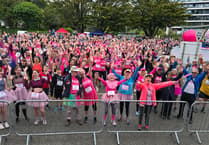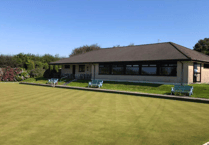With parts of England sweltering in record breaking temperatures and the Met Office issuing its first ever red alert for hot weather, first aid and health response charity St John Ambulance has issued simple – potentially lifesaving – advice for staying safe and cool in the hot weather.
Craig Harman, St John Ambulance’s acting Chief Operating Officer says: “The latest hot weather warnings mean people’s lives could be at risk, but St John is ready, and we are stepping up our work to provide extra support wherever we can.
“I would urge everyone to pay close attention to weather forecasts and public health messaging to ensure they stay safe and well – especially at a time when the NHS is under significant pressure.
“Conditions like dehydration, sunburn and heat exhaustion are easily avoided and, in most cases, can be treated without a trip to hospital.
“Everyone wants to enjoy the lovely summer weather, but let’s do that safely.”
Hot weather first aid advice from St John Ambulance
Long periods in the sun can take its toll after a while and can lead to heat exhaustion. Heat exhaustion is caused by a loss of salt and water from the body, usually through excessive sweating. It develops slowly and usually happens to people who aren’t used to hot, humid weather. If you’re at an outdoor event and it’s very hot, it’s easy to suffer from heat exhaustion.
How to spot heat exhaustion:
There are six key things that you may lead you to suspect that someone has heat exhaustion:
1. Headache.
2. Dizziness and confusion.
3. Loss of appetite and feeling sick.
4. Sweating with pale clammy skin.
5. Cramps in the arms, legs and stomach.
6. Fast, weakening pulse and breathing.
How to treat heat exhaustion:
1. Help them to lie down in a cool place and raise their legs.
2. Give them lots of water to drink or isotonic sports drinks.
3. Check their breathing, pulse and responsiveness.
4. Suggest they get medical advice. Call 999/112 if you are concerned.
Heat stroke is even more serious than heat exhaustion, and can be life-threatening.
How to spot heat stroke:
These are the six key things to look out for:
1. Headache, dizziness and discomfort.
2. Restlessness and confusion.
3. Hot flushed and dry skin.
4. A fast deterioration in the level of response.
5. A full bounding pulse.
6. Body temperature above 40°C (104°F).
How to treat heat stroke:
1. Move them to a cool place and remove their outer clothing.
2. Call 999/112.
3. Sit the individual down and wrap them in a cool, wet sheet. If there isn’t a sheet available fan them or sponge them down with cold water to keep them cool. If available, use cold packs placed in the armpits and around the neck.
4. Once their temperature seems to have gone back to normal, replace the wet sheet with a dry sheet.
5. While waiting for help to arrive, keep checking their temperature, as well as their breathing, pulse and level of response.
6. If they start getting hot again, repeat the cooling process to lower their temperature.
Whether you’re out in the park, or relaxing on the beach, it’s important to avoid too much exposure to the sun by covering up with clothing, staying in the shade and applying high factor sunscreen. Most sunburn is mild, but in severe cases the skin can become damaged, turn lobster red and blister. It is also possible to develop heat exhaustion.
What to look for:
1. Reddened skin.
2. Pain in the area of the burn.
3. There may be blistering.
How to treat sunburn:
1. Cover the skin with light clothing and move them out of the sun.
2. Give them cold water to sip.
3. Cool the skin with cool water for 10 minutes.
4. Apply calamine lotion to soothe mild sunburn.
5. If there are blisters, advise that they see a healthcare professional.
6. Treat any symptoms of heat exhaustion or heatstroke and get medical help.
Dehydration happens when someone loses more fluid than they take in, especially if it’s really hot outside, so make sure you’re sipping lots of water at regular intervals.
How to spot dehydration:
There are four key things to look for if someone is suffering from dehydration:
1. They may complain of headaches and light headedness.
2. Dry mouth, eyes and lips.
3. Pass only small amounts of dark urine.
4. Have muscle cramps.
How to treat dehydration:
1. Help them to sit down and give them plenty of water to drink.
2. Giving them an oral rehydration solution to drink will help replace salt and other minerals which they’ve lost – you can buy this in sachets from any pharmacy.
3. If they have any painful cramps, encourage them to rest, help them stretch and massage their muscles that hurt.
4. Keep checking how they’re feeling – if they still feel unwell once they’re rehydrated then encourage them to see a healthcare professional straight away.
If left untreated, someone with dehydration can develop heat exhaustion, which is more serious, so it’s important to make sure they rehydrate themselves as soon as possible.
Fainting is when someone briefly becomes unresponsive, often causing them to fall to the ground. It happens because for a moment, there is not enough blood flowing to the brain.
People often faint as a reaction to pain, exhaustion, hunger, or emotional stress. It is also common for people to faint after they have been standing or sitting still for a long period of time, especially if they’re feeling hot.
What to look for:
1. There may be a brief loss of response, often causing them to fall to the ground.
2. They may have a slow pulse.
3. They may have pale, cold skin and sweating.
How to treat someone who has fainted:
1. Advise them to lie down.
2. If possible, elevate their legs slightly using a stool, cushions or pillows. Make sure they get plenty of fresh air and ask other people to stand back.
3. Reassure them and help them to sit up slowly, when they feel better.
4. If they stay unresponsive, open their airway, check their breathing and prepare to treat someone who is unresponsive.
For more first aid advice visit www.sja.org.uk





Comments
This article has no comments yet. Be the first to leave a comment.